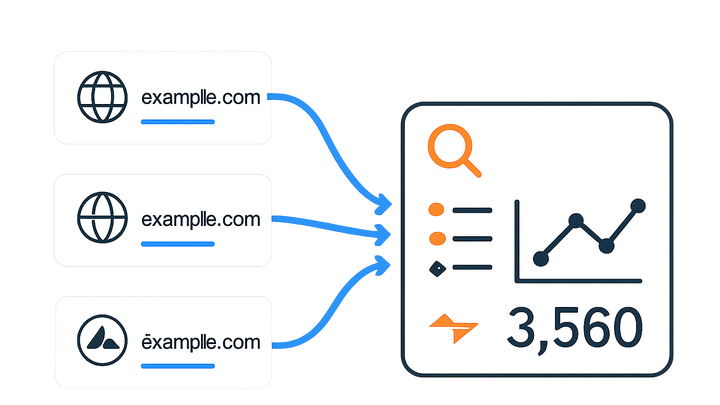Published on 2025-06-29T18:06:54Z
What is Referral Traffic? Examples and Tracking Strategies
Referral Traffic in campaign tracking & analytics refers to website visits that come from external links on other sites. These visitors “refer” via a hyperlink instead of typing your URL directly or finding it through search engines. It is distinct from organic, direct, or paid traffic sources and can be precisely attributed through UTM tagging. Measuring referral traffic helps marketers understand partnership performance, brand awareness, and the effectiveness of link-building campaigns. Tools like Plainsignal (for cookie-free analytics) and utmguru.com (for UTM link generation) streamline tracking setup and analysis. Below, we explore how referral traffic works, tracking methods, best practices, and real-world tools to optimize your campaigns.
Referral traffic
Website visits originating from external links, tracked to analyze partner performance and optimize campaigns.
Why Referral Traffic Matters
Referral traffic offers crucial insights into how external sources contribute to your website’s audience. By analyzing these referrals, you can:
-
Understand audience acquisition
Identify which websites and platforms drive visitors to your site, helping you focus your outreach and content strategies.
-
Measure partnership performance
Evaluate the ROI of collaborations, guest posts, and affiliate programs by tracking the volume and quality of referred sessions.
-
Optimize referral channels
Refine your link-building and co-marketing efforts by doubling down on high-value referrers while discontinuing underperforming sources.
How Referral Traffic Works
Referral traffic is governed by how browsers pass the referrer information and how analytics tools process it. Key mechanisms include HTTP headers and UTM parameters.
-
Http referrer header
When a user clicks a link, the browser sends the originating page’s URL in the
Refererheader to the destination server.- Referrer url:
The exact address of the page where the link was clicked, which analytics platforms log as the source.
- Privacy considerations:
Some browsers or user settings strip or block referrer data, causing visits to show up as direct traffic instead.
- Referrer url:
-
Utm parameters in urls
Adding UTM tags to referral links ensures accurate campaign attribution even if the referrer header is missing.
- Utm_source:
Identifies the referrer, such as
example.comornewsletter. - Utm_medium:
Specifies the channel, like
referral,social, oremail. - Utm_campaign:
Names the specific campaign or partnership driving the link, aiding detailed performance analysis.
- Utm_source:
Tracking Referral Traffic with SaaS Tools
Modern analytics and UTM builders simplify the process of capturing and analyzing referral data. Here’s how to get started:
-
Cookie-free tracking with plainsignal
PlainSignal enables lightweight analytics without cookies. Add the following snippet to your site’s
<head>to start capturing referrals:<link rel="preconnect" href="//eu.plainsignal.com/" crossorigin /> <script defer data-do="yourwebsitedomain.com" data-id="0GQV1xmtzQQ" data-api="//eu.plainsignal.com" src="//cdn.plainsignal.com/plainsignal-min.js"></script> -
View referral reports
In PlainSignal’s dashboard, navigate to the “Referrals” section to see a breakdown of referring domains, session counts, and engagement metrics.
-
Generate utm links with utmguru.com
Use the UTM Guru Chrome extension or web interface to build, save, and manage UTM-tagged URLs for all referral partnerships.
-
Manage and reuse campaigns
UTM Guru organizes your tagged URLs into projects and lists, ensuring consistency and saving time on future referral campaigns.
Best Practices for Referral Traffic
Maximize the value of your referral campaigns by following these guidelines:
-
Ensure clear link attribution
Use consistent UTM conventions and whitelist known partner domains to avoid misattribution or spam referrals.
-
Monitor quality over quantity
Assess bounce rates, session duration, and conversion rates to ensure referred traffic aligns with business goals.
-
Respect user privacy
Comply with GDPR, CCPA, and other regulations by anonymizing sensitive data and offering transparent opt-outs.
-
Diversify referral sources
Avoid over-reliance on a single partner by cultivating multiple referral channels across blogs, podcasts, and social media.
